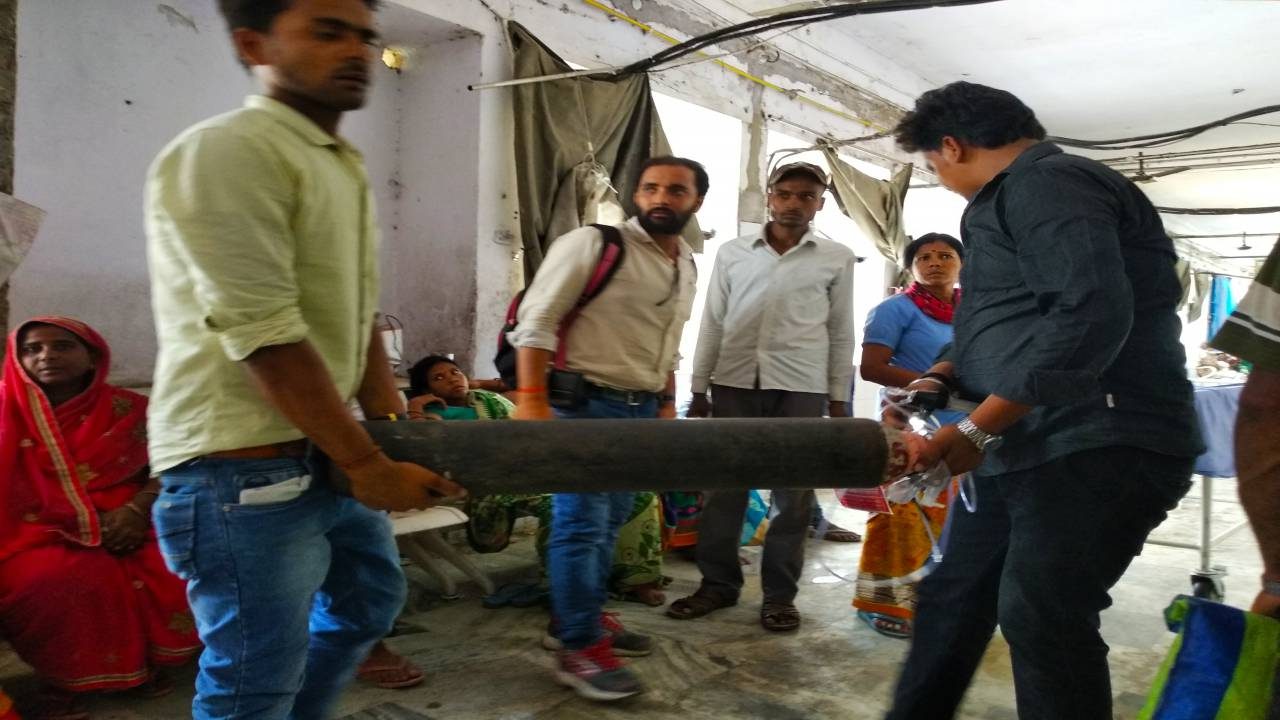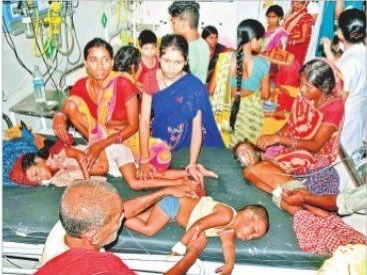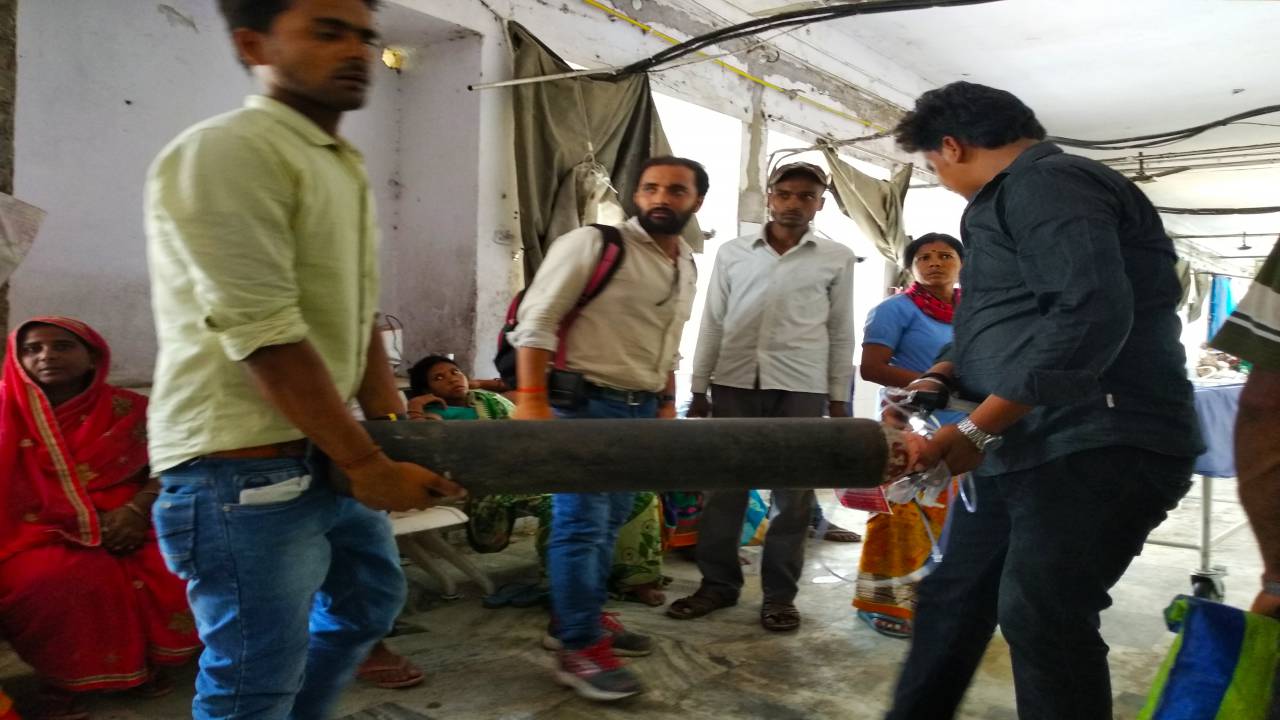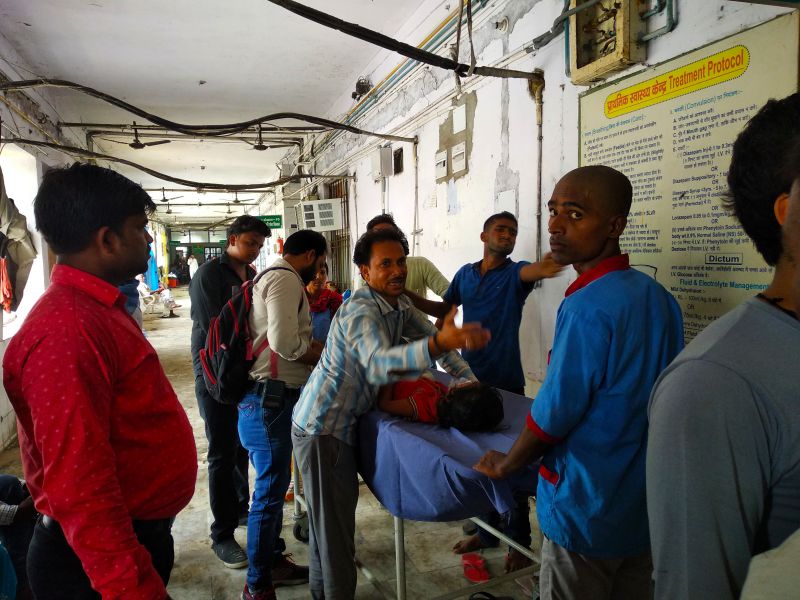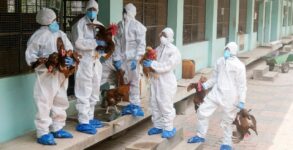In Bihar’s Muzaffarpur, children are under attack of the deadly disease – Acute Encephalitis Syndrome (AES). Encephalitis is the inflammation of brain cells (neural cells). Health officials have confirmed that several cases of Encephalitis also known as Chamki fever have come to city’s Shri Krishna Medical College and Hospital (SKMCH) and a private hospital, Kejriwal Hospital.
In nine days, a total of 130 cases of encephalitis has come to light, out of which 48 have succumbed to death. Monday had the highest death toll, with 20 children losing their lives. Children admitted to hospitals are having symptoms of convulsion, high temperature, and memory loss.
Presently, the high temperature along with humidity more than the normal is considered to be an ideal situation for the outbreak of the disease. Every year, Muzaffarpur witnesses children’s death during the summer time. It has been for ten years now that children continue to be prone to this deadly disease.
Insufficient healthcare facilities:
SKMCH, the largest government hospital of Muzaffarpur district comprises of two Pediatric Intensive Care Unit (PICU). PICU-I has a capacity of eight beds on which 16 infants were under treatment as PICU-II had limited space. After filling of all three PICU wards, latest victims were taken to the adult ICU ward. One bed had been accommodating three ailing infants.
With just four oxygen points, not every patient could avail the oxygen facility which angered their families. The families had to arrange for the oxygen cylinders themselves and moreover the absence of attendants and doctors overnight resulted in death of three children till yesterday morning, alleged the acquaintances of patients.
Talking to Newsd, grandmother of Rubi Kumari said – My granddaughter lost her life due to negligence in checkup. If doctors & nurses would have treated her overnight, she could have been alive.
3-year-old Kajal admitted to SKMCH was withdrawn from PICU ward due to lack of treatment facilities. In the midst of shifting new patients from the emergency ward to PICU, two children were put on a single strecher.
Muzaffarpur Civil Surgeon Dr Shailendra Prasad Singh said they were facing a shortage of infrastructural facilities. All three PICU wards are full of patients so ICU ward is in use. He further added, we are working with makeshift wards and ICU in treating kids at Primary Health Centre (PHCs). When asked to confirm if their is an AES outbreak, he said there is no research at the district or state level in this regard.
Notably, former union health minister Dr Harshvardhan had visited the SKMCH nearly four years ago. He had made several announcements including setting up of a Virology lab at the SKMCH to study the nature of diseases but no such facility exists.
Child specialist Dr Gopal Shankar Sahni told Newsd, “Since 2014, any research on AES has not been undertaken by any public or private agency.” Due to shortage of doctors, large number of patients are being treated in a single space.
Hospital sources said, the appointment of child specialists could have been requested from state headquarters which would have enabled the PHCs with proper treatment for the village population but this did not happen.
Suspicion over Encephalitis with Litchi consumption:
In 2014, a research carried out by The Lancet Gobal Health, established a relation between litchi consumption and occurrence of Encephalitis.
The researchers collected clinical specimen (blood, cerebrospinal fluid and urine) and environmental specimen (litchis). They conducted tests for evidence of infectious pathogens, pesticides, toxic metals and other non-infectious causes, including the presence of hypoglycin A or methylenecyclopropylglycine (MCPG), naturally-occurring fruit-based toxins that cause hypoglycaemia and metabolic derangement.
For their research, they considered 390 patients who came for the treatment in two hospitals in Muzaffarpur between May 26 and July 17, 2014. Out of them, 122 (31 per cent) died. The researchers found that the absence of an evening meal significantly modified the effect of eating litchis on the disease.
But months later they published another paper in The American Journal of Tropical Medicine and Hygiene found that the litchis themselves weren’t to blame but the pesticides used on them.
The real culprit was endosulfan, a controversial pesticide that is being phased out globally.
The researchers who undertook the study said that litchi trees in the area were treated with the toxic pesticide. Most of the children who were affected consumed unwashed fruits.
Besides this, proper prevention in litchi consumption include-
- Soaking of litchi fruit overnight in water which helps to remove traces of pesticide from the peel of the fruit.
- Always try to peel of litchi skin with hands and not teeth.
- Once peeled off, wash the fleshy fruit part with water.
- Do not consume it in empty stomach &
- Do not drink water immediately after having the fruit.
Symptoms of Encephalitis- In infants and young children, signs and symptoms might also include:
- High Fever
- High Fever
- Bulging in the soft spots (fontanels) of an infant’s skull
- Nausea and vomiting
- Body stiffness
- Poor feeding or not waking for a feeding
- Irritability
- One bed had accommodation of three ailing infants &
- Loss of consciousness
Last week, in a high profile meet of district officials, Muzaffarpur District Magistrate (DM) Alok Ranjan Ghosh ordered officials to treat children suspected with AES in accordance with protocol laid down by National Council for Disease Control, New Delhi.
If the state government was aware of annual outbreaks of an acute neurological illness with high mortality among children residing in Muzaffarpur, the country’s largest litchi cultivation region then these questions arise.
- Why prior medical facilities and awareness campaign were not made available to control the outbreak of AES since last 10 years?
- Why there is no “Virology Laboratory” in Muzaffarpur’s SKMCH despite of announcement and the fact that AES occurs annually?
- Why Primary Health Centres (PHCs) were not well equipped to treat victims of encephalitis in rural areas?
After mortality of more than 40 children, the MLA representing Muzaffarpur assembly constituency, Suresh Sharma (also the urban Development Minister, Bihar government) was convinced of the fact that children dying was a seasonal affair and not due to the outbreak of any deadly disease.
Health Minister of the state is yet to pay a visit to the suffering patients also reflects the non-seriousness of the government to overcome this mayhem like situation.

